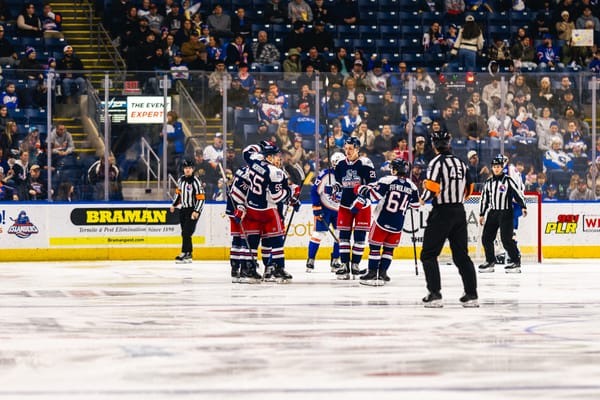Zac Jones is proving that last season was not a fluke
A strong sophomore season cements his credibility as a top NHL prospect.
After he produced 23 points in 32 games as a freshman at UMass and played a prominent role for Team USA at the World Junior Championship in 2020, there was universal consensus that Zac Jones’ stock had risen significantly. A year later, a 2019 redraft would undoubtedly see Jones taken much earlier than the No. 68 slot the Rangers snagged the blueliner at.
The one lingering question was whether the left-handed defenseman could do it again. As great as Jones was, his great beginning and end to the season bookended a moderate drop in performance in which he produced just three points in 15 games.
He’s leaving little doubt about his abilities this season, matching his play from last season and then some. Despite being just one of three teenagers on the roster, Jones has been a leader on the ice for UMass, playing in all situations for the team and averaging more than 23 minutes-per-game (via InStat). Through 15 games, Jones has recorded five goals and 10 assists, and he’s tied for the highest points-per-game average among defensemen in the NCAA (minimum five games).
One minor criticism of Jones’ game last season was that he leaned too heavily on being a playmaker and was reluctant to shoot the puck. Jones’ shot lacks velocity and his release is not going to worry any goaltenders. He struggles to lift the puck towards the upper portion of the net, which hampers his ability to beat goaltenders on one-timers.
The upside is that because he’s shooting towards the lower portions of the net and for accuracy rather than velocity, his shots are on target and get through layers of traffic.
Jones already has two more goals than last season in 17 fewer games. He’s shooting the puck with frequency and ranks sixth in the nation among defensemen in shots-per-game, with a 3.07 average.
At this point, it’s hard to take any worries about his defensive game too seriously. His size will impede him to some degree, but to his credit he’s not shying away from contact, though he’s not going to win many physical battles. However, he’s showing hyper-awareness on the ice. So many times this season he is reading developing plays and beating opposing players to spots on the ice, winning pucks and recycling possession for his team (watch for #24).
Jones always seems to have a knack for knowing where the puck will be a fraction of a second before everyone else on the ice. His timing is usually spot on and it’s rare to see him get caught. The best defense is to limit the other team’s ability to advance the puck past the neutral zone, and Jones is fantastic in that regard. In the defensive zone, he rarely gets lost in coverage. The biggest area of weakness is, well, his weakness. He needs to add muscle, which he surely will.
If Jones continues on this track, he’ll at least be in the conversation for the Hobey Baker Award, given to the top player in men’s college hockey. He could very well win the award next season, assuming he returns to UMass for his junior season as planned. His strong rookie season boosted Jones’ profile, but his improved played as a sophomore legitimizes him as a very good prospect. It may take another year or two for him to develop the skating and physique to complement his incredible ability to think the game, but at this point the odds have to strongly favor a future NHL career as a two-way, playmaking defenseman.




